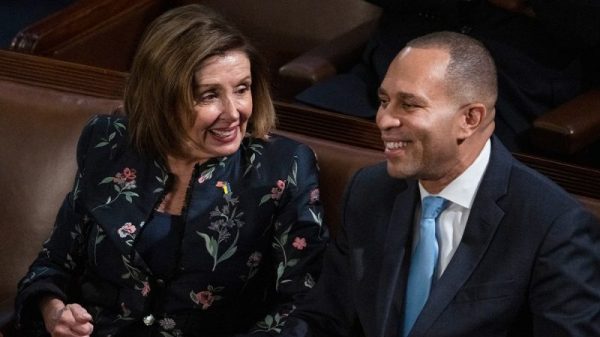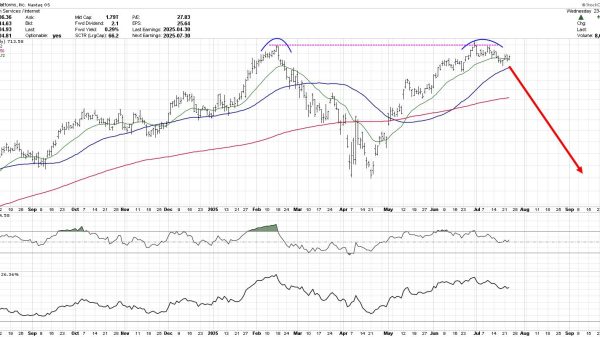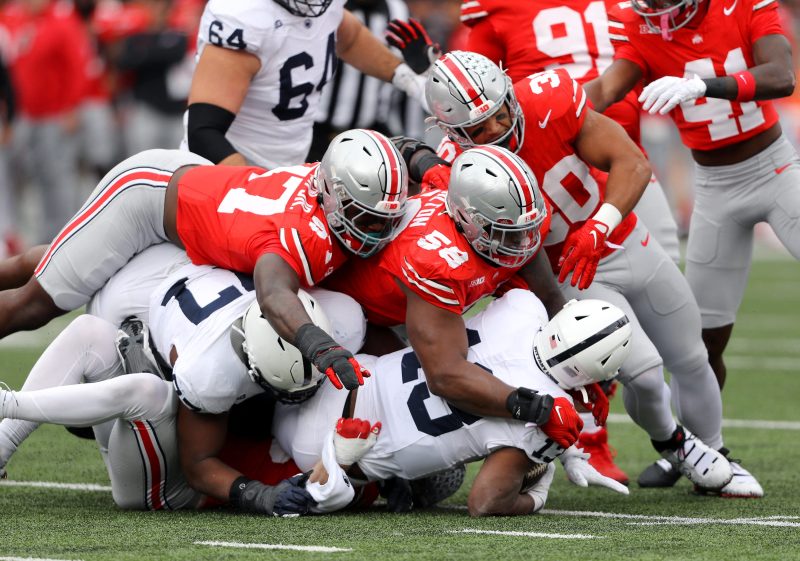The Big Ten wants to emphasize conference standings, prop of mediocre teams, and insert play-in games to the College Football Playoff process.
Big Ten’s playoff plan would devalue non-conference games rather than rectifying that soft portion of the schedule that needs boosted.
College football needs to put more value on interconference clashes. Don’t neuter high-stakes games between Power Four conferences. Emphasize them.
Tony Petitti says his preferred College Football Playoff format would make for a compelling November, and, on that point, I agree with the Big Ten commissioner.
November, though, doesn’t require a commissioner’s help. That portion of college football’s calendar already rocks, full of epic rivalries and crucial games that influence playoff qualifications and seeding.
On a wild Saturday last November, Florida upset Mississippi and Oklahoma stunned Alabama in results that altered the playoff field. That same day, Penn State barely survived Minnesota, and Arizona State wriggled past Brigham Young in a thriller with playoff stakes.
Regular-season television ratings peak in November. It’s the rest of the season that could use a boost.
That’s where Petitti’s controversial 4+4+2+2+1+3 playoff plan falls flat.
Big Ten playoff plan would devalue non-conference games
Petitti claims to want a playoff model that would improve the regular season, but his plan wouldn’t achieve that goal.
The surest way to improve the season would be to incentivizing teams to play tough non-conference games and reduce the feast of cupcake games that shackle the season’s early weeks. Petitti, though, aims to devalue non-conference games.
November would stay great in his plan, and play-in Saturday would generate buzz, but his idea to award more than 80% of the playoff bids based on conference standings and play-in games would diminish September and, to a lesser extent, even October.
“Fans will gravitate to” play-in games, Petitti said Tuesday at Big Ten media days.
At what cost?
One play-in Saturday is not worth deflating September.
If the playoff became a Petitti production based mostly on conference results, interconference games like Ohio State-Texas, LSU-Clemson and Michigan-Oklahoma would become glorified exhibitions.
Play-in Saturday could prop up average teams
Petitti admits to wanting to prolong the playoff hopes of average teams. He sees the chance for an 8-4 Big Ten team winning a play-in game and cracking the playoff as an asset, not a detriment. I see a structure that would make the season’s first two months less relevant.
I’m envisioning a scenario in which Iowa loses to Iowa State in a September non-conference matchup, and the Hawkeyes slog to 8-4 before winning a play-in game to reach the playoff, while the Cyclones go 10-2, lose a play-in game and miss the playoff.
That’s how a playoff becomes a farce.
Fortunately, Petitti’s playoff plan is going nowhere fast. He’s failed to gain support from other conferences. The playoff format for 2026 and beyond remains undecided.
Petitti would like to diminish the selection committee’s role and, as he puts it, allow playoff spots to be decided on the field and not in a boardroom. In practice, his plan not only would diminish the selection committee, but it also could dilute the influence of some November results.
Alabama, Mississippi and Miami lost to unranked opponents late last November, results that bounced them from the playoff. If Petitti’s model had been in place, the losing teams would have retained a playoff path through play-in games.
I don’t see how college football’s season improves if Syracuse upsetting Miami on the final day of November carries no weight on the playoff picture.
How to actually improve college football’s regular season
Petitti’s playoff plan would earmark four automatic bids for the Big Ten and four more for the SEC – that’s half of a 16-team field – while the Big 12 and ACC received only two automatic bids apiece.
Is it any wonder why the Big Ten hatched this plan, and the Big 12 and ACC detest it?
If Petitti wants to get serious about improving the regular season, then he’s going about this backward by focusing on conference standings and propping up mediocre teams.
Here’s how you improve the regular season: Preserve automatic bids for conference champions, but keep most of the playoff bracket open to at-large bids, and devise a system in which the playoff committee values meaningful non-conference results while evaluating bubble teams.
As it is now, Big Ten teams like Indiana and Nebraska are canceling their toughest non-conference games in favor of weaker schedules, and SEC teams cling to their Championship Subdivision games like a child hugs a security blanket.
These gimme games bog down the schedule, particularly early in the season.
To rectify that, task the selection committee to reward teams that schedule – and win – tough non-conference games and hold accountable bubble teams that beefed up their record purely by blasting patsies.
Do this, and you’d spur more Big Ten vs. SEC games, of which there are only three this season. Likewise, only three SEC teams will play a Big 12 opponent. Generating more high-stakes non-conference clashes between Power Four opponents not only would become a boon for September audience, those games also would help the committee separate the wheat from the chaff come selection time.
Imagine if Oklahoma played Oklahoma State this October, instead of Kent State, or if Texas played Texas Tech in September, instead of Sam Houston, or if Southern California opened the season against Missouri, instead of Missouri State.
That’s how you improve the season.
College football needs a play-in Saturday in December less than it needs more significant non-conference games, some of which could restore rivalries that conference realignment interrupted.
College basketball figured this out. The NCAA men’s tournament selection committee values victories against opponents within the top quadrants and thereby rewards teams that schedule tough. Qualifying for March Madness isn’t purely an exercise of assembling a fine record. Who you played, and who you beat, matters. Teams that avoid tough games are held accountable in bubble debates.
Petitti claims he’s got college football’s regular season at heart in his playoff plan. He’s wrong. His playoff plan would diminish and neglect the non-conference portion of the schedule that needs enhancement.
Blake Toppmeyer is the USA TODAY Network’s national college football columnist. Email him at BToppmeyer@gannett.com and follow him on X @btoppmeyer.



























